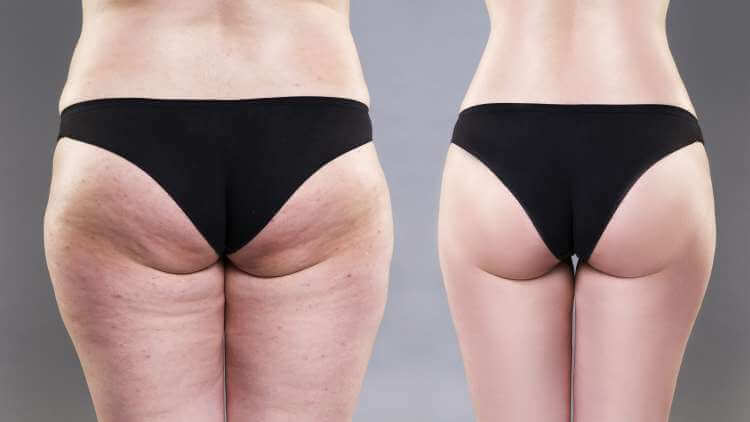When you think of weight loss surgeries, the gastric bypass is probably one of the first that comes to mind. But, how much do you actually know about how a gastric bypass works? What about recovery, post-op diet, and how much weight you can expect to lose?
If you’re looking for the answers to these questions, read on to find out:
- What gastric bypass surgery entails, how it works, and the permanency of the procedure
- The risks of the procedure
- The recovery process
- The dietary restrictions after the surgery
- How quickly to expect weight loss after the surgery, and what you’ll be expected to do to maintain this weight loss
What is gastric bypass surgery?
Gastric bypass surgery – formally known as Roux-en-Y gastric bypass surgery – is a two-part procedure involving:
1. Making a small pouch in the stomach – During this step, your surgeon will divide the stomach into one small and one large portion. Then, they will either sew or staple the smaller portion together, forming a pouch that can only hold about a cupful of food. This is what makes gastric bypass surgery a ‘restrictive’ procedure.
2. Bypass (Roux-en-Y) – Once the surgeon has created the smaller pouch, it is disconnected from the majority of the stomach and duodenum – or first part of the small intestine, and reconnected to the jejunum – another part of the small intestine.
Once the procedure is complete, food will pass from the small pouch that is now your stomach to the jejunum. Because the duodenum is bypassed entirely, your body cannot absorb as many calories and nutrients. Technically speaking, this is a malabsorptive form of weight loss.
Typically, the procedure is performed laparoscopically, just as a gastric sleeve procedure would be performed. However, it isn’t always possible to do it this way, and a laparotomy – which would involve a large cut in the middle of the stomach – may need to be used instead.
Again, it’s important to understand the difference between gastric bypass and gastric sleeve surgery. While gastric bypass essentially leaves your stomach intact, gastric sleeve surgery requires removing most of your stomach to create a smaller, permanent structure. It’s a more drastic procedure used for those who have a lot of weight to lose, though both procedures can be used to lose a significant amount of weight.
Gastric bypass surgery cost
The average cost of gastric bypass surgery in the US is $23,000. Gastric bypass surgery cost in the UK typically is between £9,500 and 15,000.
The risks of a gastric bypass
If you’re considering gastric bypass surgery, it’s best to choose a weight loss surgery center. Doing so significantly decreases your risk of complications because the surgeons at these locations typically specialize in the procedure. Generally speaking, you should look for a surgery center that performs at least 100 procedures each year.
Around 10% of patients have some minor complications after the procedure, which commonly include:
- Infections
- Digestive problems
- Ulcers
- Bleeding
A much smaller number of people – no more than 5% – experience more serious complications, which could include:
- Blood clots
- Heart attack
- Intestinal leaking
- Serious infection
There are also some issues that may occur following the surgery that aren’t related to the procedure itself. For example, because the duodenum is bypassed, your body might have difficulty absorbing nutrients, leading to deficiencies that could cause anemia and osteoporosis. Many of these problems are avoidable with proper testing following the procedure.
The recovery process: Diet and otherwise
The recovery process following a gastric bypass is largely dependent on the size of the incision. If your surgery is laparoscopic, you’ll likely be in the hospital for no more than 3 days. However, if a larger incision is required, you might be in the hospital for longer.
Diet
Following your procedure, you’ll need to follow a strict diet. This is important to both allow you to adjust to the new smaller size of your stomach, and also to ensure you’re providing your body with much-needed nourishment. Generally speaking, your diet will come in phases as you transition back to regular foods:
Week 1 – Your diet will be all liquid the week following surgery. You can typically drink small amounts of water, as well as some fat-free broth and fat-free milk during this time. This will help you get some nutrients without upsetting the stomach as it begins to heal.
Week 2 – During the second week, you can re-introduce some food back into your diet, provided it’s in pureed form. You should eat all pureed food slowly, in periods of up to 30 minutes to ensure you don’t overwhelm the stomach. You’ll probably stick to egg whites, protein shakes, meal replacement shakes, cottage cheese, and soups during this phase.
Week 3 – Week 3 allows you to add food with more texture back into your diet. This means you can eat tofu, fish, shredded chicken, and even some steamed vegetables like carrots or squash. As always, you’ll need to consume small portions.
Week 4 – Week 4 is where you take bigger steps forward into eating a more ‘normal’ diet once again. It’s still best to start with soft foods and work your way onto foods that are chewy or more fibrous. While you’re making the transition, it’s best to still consume pureed food or liquid calories, so you don’t make too many changes too quickly.
Other Recovery Tips
In addition to following a stricter diet, there are other important steps you should take to heal after your gastric bypass procedure, such as:
Take pain medication as needed – You’re going to be sore, especially if you had a large incision. Take pain medication as needed and refrain from any extreme physical activity in the early days to speed along the healing process.
Stay hydrated – Because food provides us with a lot of the water the body needs daily, it’s important you drink enough water when you aren’t eating.
Sleep – You’ll need to sleep on a slight incline during the first few weeks after your procedure.
Watch out for ‘dumping syndrome’
Dumping syndrome is quite common after a gastric bypass procedure. It’s caused by the pylorus, which is a safety valve that prevents food from entering the small intestines until it has passed through the stomach and been broken down by gastric juices. Due to the “bypass” nature of a gastric bypass, your stomach might ‘dump’ food into the small intestine – causing discomfort, cramping, diarrhea, nausea, dizziness, and even increased heart rate. The best way to avoid this problem is by following your diet as closely as possible and eating small amounts of food.
When to expect weight loss, and how to take care of your body
Most of your weight loss will occur immediately following surgery, and in the 18 months that follow. Because you’ll be eating so little following your surgery, you should expect the most dramatic results immediately. A simple way to stay on track and keep weight loss coming in the months that follow recovery include:
- Regular consumption of 3 small, nutrient-dense meals daily
- Regular exercise – at least 3 times, but ideally 5 times per week
- Regular follow-ups with the doctor
If you’ve been considering weight loss surgery, and don’t have more than 50 kilos to lose, a gastric bypass could be one of the safest surgery options available to you. With proper maintenance, over time it can help you lose weight and sustain that weight loss, even if you previously struggled with diet and exercise alone.
If you’re considering gastric bypass surgery, ask your doctor whether you’re suitable for this procedure. If, however, you’re hoping for a risk-free, non-surgical option to help you lose more weight, dietary supplements such as PhenQ can be a great alternative when combined with a reduction in calories and an increase in exercise.
Whichever route you take, we’re here to support you along the way. Take a look through our other articles like the one about for more great weight loss advice!





